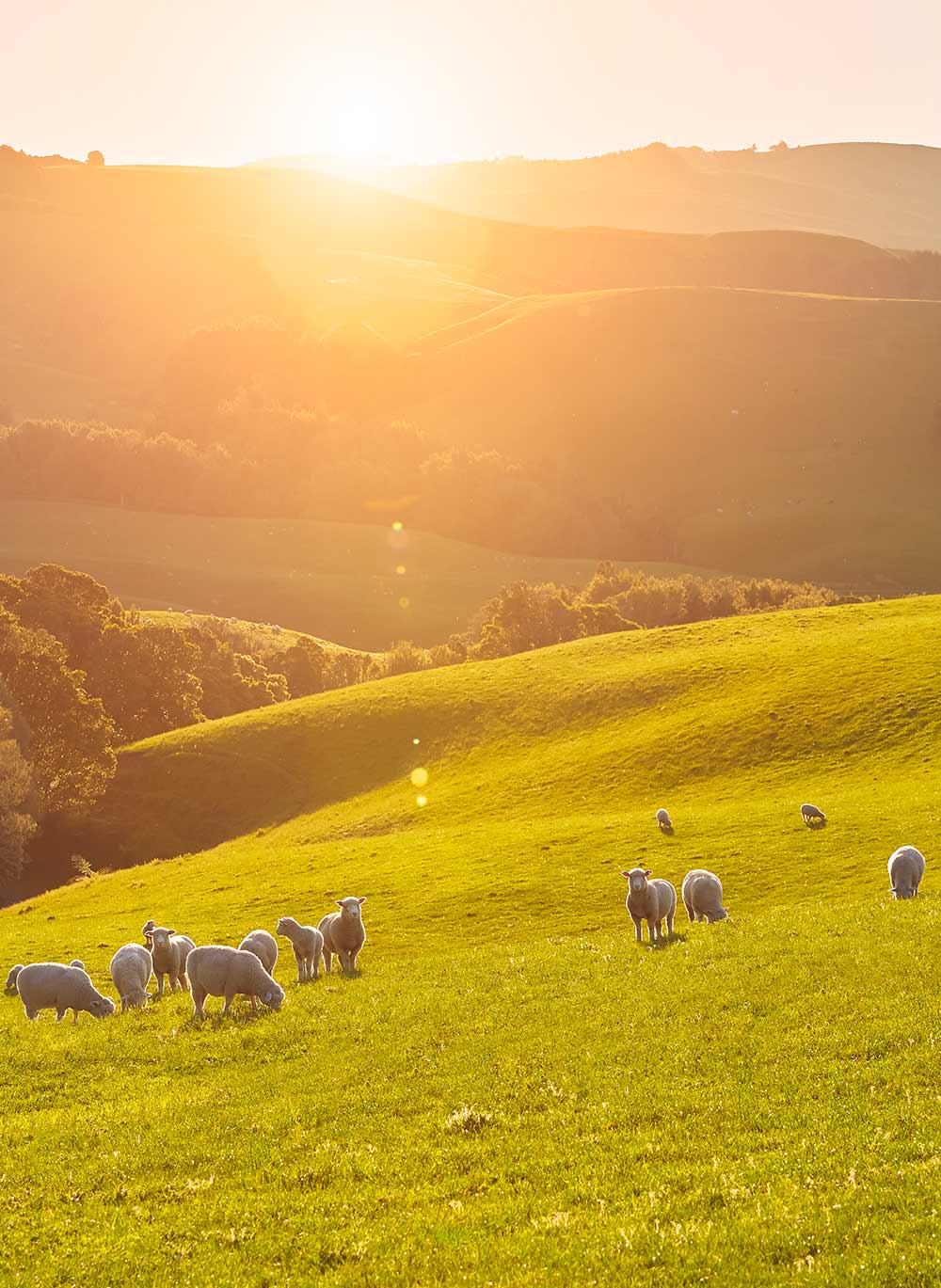

Less Is More
In just over three decades, New Zealand’s lamb export industry has undergone a remarkable transformation. In 1990, nearly half of all lamb exports were in carcass form, with the remainder being cuts. In 2024, 95 per cent of lamb exports are now cuts. This shift has revolutionised the industry, with sheep and beef production achieving a 30 per cent decrease in absolute greenhouse gas emissions. Beef + Lamb New Zealand explains how the industry maximises from less.
In the rolling hills and lush pastures of New Zealand, farmers are not just producing worldclass beef and lamb, they are custodians of the land, leading the charge in sustainable agriculture. Supported by organisations like Beef + Lamb New Zealand (B+LNZ), these farmers are implementing innovative practices and driving positive change in the meat industry. “Sheep and beef farmers are making significant strides in sustainability, both in terms of environmental stewardship and productivity,” says Beef + Lamb New Zealand Chair Kate Acland, a midCanterbury sheep and beef farmer. “Our light environmental footprint, our commitment to reducing emissions, the preservation of biodiversity and supporting our communities all underpin the way we farm in New Zealand.”
On average, around 25 percent of sheep and beef farms in New Zealand are covered by native vegetation, contributing to biodiversity and carbon sequestration efforts. New Zealand sheep and beef farmers are also a beacon of efficiency, doing more with less. Since 1990, the value of New Zealand’s sheep and beef exports has doubled, while the number of animals farmed has halved, demonstrating significant efficiency gains. The average weight of a lamb carcass has increased from 14.4kg in 1990 to 19kg today, showcasing improvements in productivity and meat quality. Lamb exports have shifted from 47 per cent carcasses and 53 per cent cuts in 1990 to 5 per cent carcasses and 95 per cent cuts today, indicating a focus on higher value products. The average ewe lambing per cent has increased from 100 in 1990 to 132 lambs born per 100 ewes, highlighting improvements in breeding and animal husbandry practices.
Playing a part in addressing climate change.
Absolute greenhouse gas emissions from New Zealand sheep and beef production have reduced by 30 per cent since 1990, demonstrating a commitment to emission reduction. The woody vegetation on sheep and beef farms, comprising 1.52 million hectares of native forest and 0.48 million hectares of exotic vegetation, plays a crucial role in sequestering carbon and offsetting emissions.
Research indicates that widespread incorporation of low-methane breeding traits into New Zealand’s sheep flock could reduce sheep farmer’s total annual methane emissions by 0.5 to 1 per cent annually, compounding year on year. New Zealand was the first country in the world to identify the genetics for low methane sheep and now other countries like Ireland and the US are investing heavily in this area. New Zealand is now looking at cattle. “Genetics improvement is cumulative and permanent, and like interest on a mortgage, it compounds,” says Acland. “Initially, we will see a small decrease in methane production but over a number of sheep generations, the changes across the national flock will be substantial.”
B+LNZ’s Cool Sheep programme, funded by the Ministry for Primary Industries (MPI) and supported by AgResearch. This is a world-first project that aims to give every sheep farmer in New Zealand the opportunity to use genetic selection to reduce the greenhouse gas emissions of our national flock. Research is also underway into other technologies (like methane inhibitors) and farming management practices to help farmers reduce their greenhouse gas emissions.
This work underscores the sector’s commitment to sustainability and its contribution to addressing climate change. Through sustainable practices, innovation, and a commitment to environmental stewardship, New Zealand sheep and beef farmers are not only ensuring the future viability of their farms but also leading the way towards a more sustainable red meat sector.
